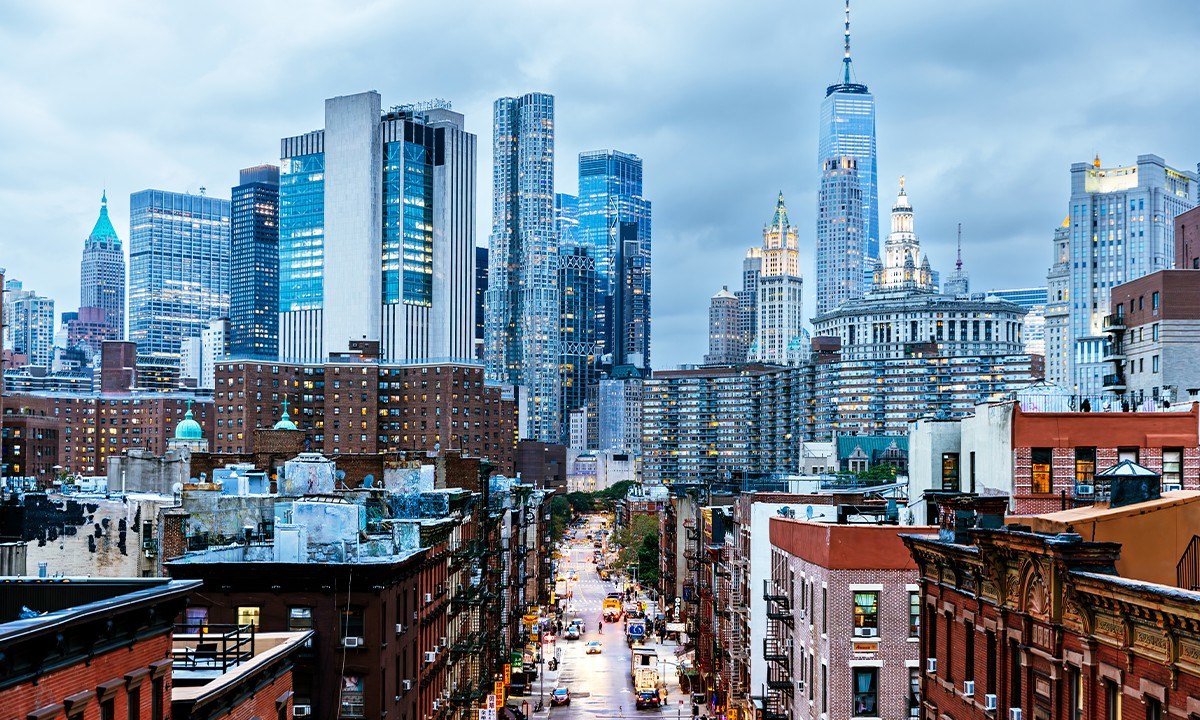
Getty Images
Major metros like New York City, Houston, Dallas and Miami have seen an influx of new residents, largely in part to international immigrants putting down roots in these cities.
Population growth in U.S. metro areas was overall faster between 2023 and 2024, according to the latest data from the U.S. Census Bureau. The report also states that some cities which experienced an exodus of residents during the COVID-19 pandemic are now seeing people flock back.
However, the U.S. Census Bureau’s findings cite the collective increase in population across metro areas was largely due to international migration.
“Increasingly, population growth in metro areas is being shaped by international migration,” said Kristie Wilder, a demographer in the Census Bureau’s Population Division. “While births continue to contribute to overall growth, rising net international migration is offsetting the ongoing net domestic outmigration we see in many of these areas.”
From 2023 to 2024, the number of people living in a U.S. metro area grew by nearly 3.2 million to 293.9 million people, about a 1.1% increase.
For further perspective, this population growth in major metros between ’23 and ’24 was faster than the year prior between 2022 and 2023. That increase was only 0.9% or 2.6 million people.
“Economic opportunities attract big-city movers, especially as many companies return to the office,” says Hannah Jones, senior economic research analyst at Realtor.com®.
“During the pandemic, companies moved towards remote-first of remote-only working models, which allowed many big-city dwellers to move out to more affordable locales. However, workers have increasingly returned to the office, driving many to move back to the city.
“Though healthy, the job market has cooled significantly in recent months, meaning that the best option for many is to adhere to new working modes in order to stay in their job.”
The U.S. Census Bureau used the Population Estimates Program with current data on births, deaths and migration to calculate population change since the most recent decennial census (2020 Census) and produce an annual time series of estimates of population.

(Realtor.com)
The following metro areas saw the largest growth:
1. New York/Newark/Jersey City, NY-NJ
This metropolitan area is considered a melting pot of people. Newark and Jersey City, NJ are both located just across the Hudson River from New York City. People have moved to NJ for a slightly cheaper cost of living while still having the accessibility to NYC.
- April 1, 2020 population: 20,083,412
- July 1, 2023 population: 19,726,871
- July 1, 2024 population: 19,940,274
- Increase: 213,403 people
2. Houston-Pasadena-The Woodlands, TX
These three metros make up the Greater Houston area. Houston, with access to Galveston Bay, allows for shipping and trade. The Space Center, located in Houston, has provided a bevy of jobs. Adjacent to Houston is Pasadena, which at one time was dubbed the strawberry capital of the world. While it still hold an annual strawberry festival, the city has grown into a vibrant suburb. Meanwhile, about 28 miles north of Houston, The Woodlands community offers the best of the outdoors from hiking trails to world-class golf.
- April 1, 2020 population: 7,150,233
- July 1, 2023 population: 7,598,011
- July 1, 2024 population: 7,796,182
- Increase: 198,171
3. Dallas-Fort Worth-Arlington, TX
Everything is done big in the Lone Star state and another Texas metro is in the top spot when it comes to a population increase. The Dallas–Fort Worth–Arlington area is home to winning professional sporting teams, art, culture and top-rated restaurants.
- April 1, 2020 population: 7,638,258
- July 1, 2023 population: 8,166,110
- July 1, 2024 population: 8,344,032
- Increase: 177,922
4. Miami-Fort Lauderdale-West Palm Beach, FL
During the pandemic people flocked to Florida and the Miami-Fort Lauderdale–West Palm Beach area continues to see its population increase. This area offers real estate at every level—from rentals to luxury condos.
- April 1, 2020 population: 6,138,357
- July 1, 2023 population: 6,334,517
- July 1, 2024 population: 6,457,988
- Increase: 123,471
5. Washington-Arlington-Alexandria, DC-VA-MD-WV
The revolving door of the political landscape sees people moving in and out of the Washington, DC area year after year, but for its residents rooted in and around our Nation’s capital, they know what the area has to offer. Adjacent Arlington and Alexandria, VA offer the suburban lifestyle but accessibility to the downtown DC.
- April 1, 2020 population: 6,278,595
- July 1, 2023 population: 6,345,881
- July 1, 2024 population: 6,436,489
- Increase: 90,608
6. Phoenix-Mesa-Chandler, AZ
This desert oasis has seen significant population rise. Phoenix the capital of Arizona is known for high-end spas and world-class golf. Mesa, just east of Phoenix,
- April 1, 2020 population: 4,851,322
- July 1, 2023 population: 5,102,020
- July 1, 2024 population: 5,186,958
- Increase: 84,938
7. Orlando-Kissimmee-Sanford, FL
Orlando, FL, home to Disney World, has seen its share of growth as the area is pushing a population of three million people. While not located along the Florida coastline, affordable housing and warm weather are among the benefits of living inland
- April 1, 2020 population: 2,673,387
- July 1, 2023 population: 2,864,544
- July 1, 2024 population: 2,940,513
- Increase: 75,969
8. Atlanta-Sandy Springs-Roswell, GA
Atlanta, GA is the headquarters of several Fortune 500 companies, such as The Home Depot and Coca-Cola. The city’s suburban neighbors, Sandy Springs and Roswell, both offer historic charm and plenty of green space.
- April 1, 2020 population: 6,106,805
- July 1, 2023 population: 6,336,015
- July 1, 2024 population: 6,411,149
- Increase: 75,134
9. Chicago-Naperville-Elgin, IL-IN
Chicago is right along Lake Michigan, but many residents find it cheaper to live in the nearby suburb of Elgin or Naperville, but still have the accessibility to downtown.
- April 1, 2020 population: 9,454,363
- July 1, 2023 population: 9,337,814
- July 1, 2024 population: 9,408,576
- Increase: 70,762
10. Seattle-Tacoma-Bellevue, WA
Rounding out the list is the Seattle, WA metro, including Tacoma and Bellevue. Located along the Puget Sound, this Pacific Northwest metro has access to beaches on one side and mountains to the other. It’s also home to Microsoft and Amazon. Though the weather can be rainy, the strong job market and transportation int he city is a plus.
- April 1, 2020 population: 4,018,783
- July 1, 2023 population: 4,078,828
- July 1, 2024 population: 4,145,494
- Increase: 66,666



